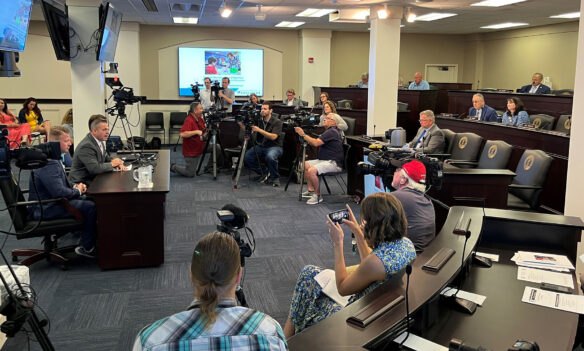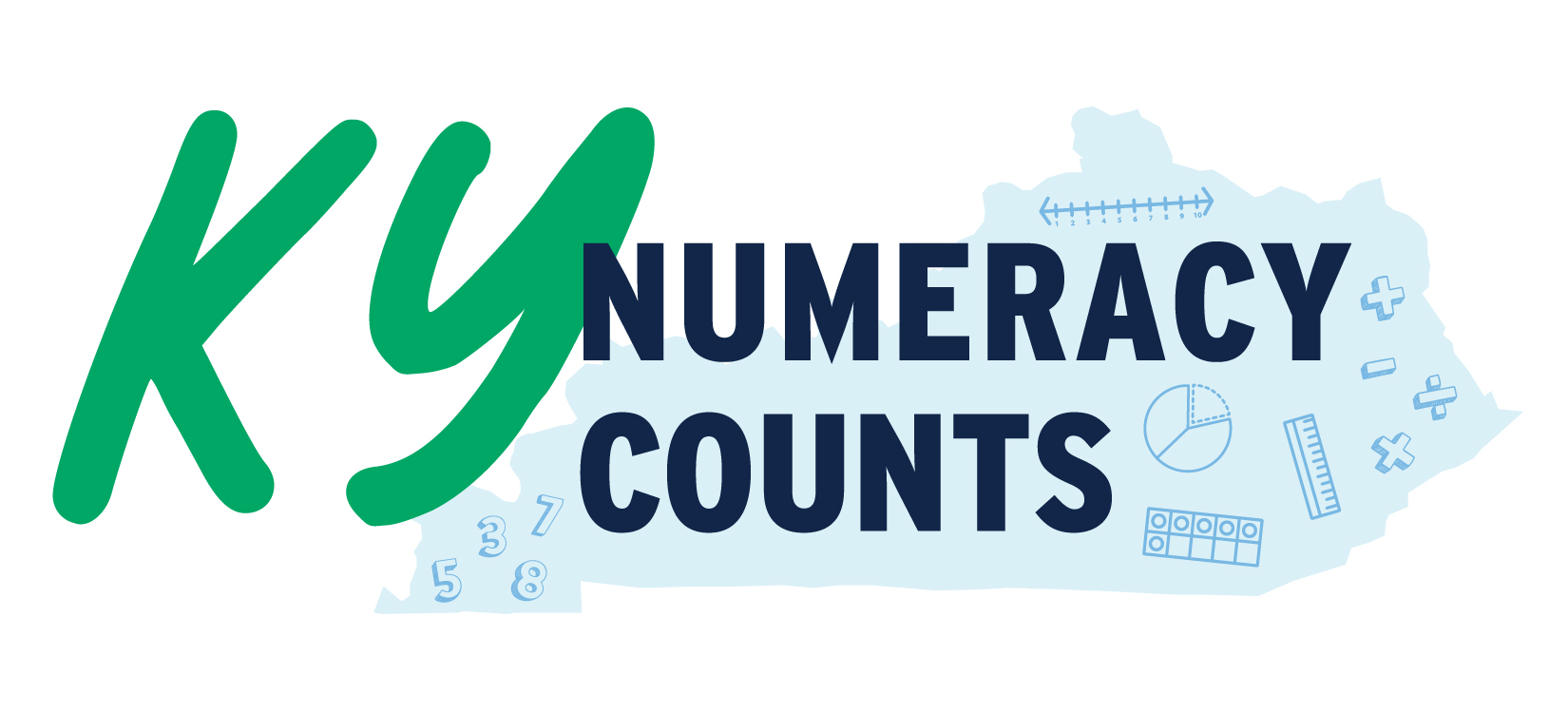
Kentucky Education Commissioner Jason E. Glass and others from the Kentucky Department of Education presented before the Interim Joint Committee on Education on June 7 to discuss how to increase and maintain the state’s teacher workforce. (Photo by Toni Konz Tatman, June 7, 2022)
As the country continues to face challenges in recruiting and retaining teachers, Kentucky Education Commissioner and Chief Learner Jason E. Glass and others from the Kentucky Department of Education (KDE) presented before the Interim Joint Committee on Education on June 7 to discuss how to increase and maintain the state’s teacher workforce.
Glass began his presentation by inviting the committee members to reflect on their own experiences as a learner and share who they consider to be a great teacher in their life.
Rep. Tina Bojanowski said her favorite educator was her 7th-grade math teacher at Jeffersontown High School (Jefferson County).
“My parents were getting a divorce then, and for some reason, he may have known that I needed a little extra [care] without ever saying it,” said Bojanowski. “From that day forward I’ve had a love of learning math.”
Rep. Ed Massey said teaching can have a great impact in people’s lives.
“The biggest thing to me about quality teaching is that there’s a disposition towards love and affection for the children and making sure all children have the ability to succeed,” he said.
Glass told the members it’s important to remember what exceptional teaching looks like and its impact when decisions are being made to support teachers and the teaching profession.
“We want more people like the very ones that you thought about … to enter the teaching profession and remain in the teaching profession,” said Glass.
To illustrate Kentucky’s need to for more educators, Glass presented the members with current data regarding teacher retention and recruitment. The teacher turnover rate – the number of teachers leaving the profession each year – was 16.2% for the 2020-2021 school year. On average, going back to the 2017-2018 school year and up through the 2020-2021 school year, Kentucky’s teacher turnover has been about 17%. The national turnover rate hovers around 16%, Glass said, so Kentucky trends slightly worse than other states when it comes to keeping teachers in the classroom.
When jobs are posted, Glass said, not enough of them are being filled. Between the 2015-2016 and the 2021-2022 school years, the number of job postings increased. But on average, just 83.5% of those postings were filled. Glass said this demonstrates that Kentucky is experiencing an increase in the need for educators, but only filling them at a constant rate.
When jobs are posted but there are not enough properly certified teachers to fill them, districts resort to using emergency certifications to help fill the gap. Since the 2015-2016 school year, Kentucky has been experiencing an increase in the number of emergency certifications issued.
“This is a clear indication that we have a rising problem in the workforce in Kentucky,” said Glass. “We are seeing an increased reliance on emergency certifications to fill the need for educators.”
Glass said another factor KDE was interested in looking at was how many teachers there are in the state that are at risk of leaving, whether that is losing early career teachers who are most likely to leave in their first five years of teaching, retiring teachers or those who come back in after a break in service. For fiscal year 2022, 72% of the teacher workforce falls within one of these risk categories.
Glass said it’s important to consider the pathways new teachers use when coming into the teaching profession. While there have been numerous options added over the years, the majority of Kentucky educators choose either the traditional teacher education programs or Option 6, which is an alternative program operated by a university.
“If you want to have an impact on teachers coming into the profession, the biggest places you can do that … are in the traditional education program, or in the university-based alternative program,” he said.
KDE recommendations
Glass shared possible short-term and long-term solutions for the Kentucky legislature to consider when addressing the issues in the teacher workforce. These solutions focus on investing significant resources in GoTeachKY, the state’s existing program for recruiting and retaining teachers in the Commonwealth; addressing the teacher compensation crisis; and raising the desirability and diversification of teaching.
KDE’s recommendations for short-term solutions include:
- Increasing access to Teaching and Learning career pathway courses for all Kentucky high school students;
- Creating opportunities for scholarships associated with Educators Rising participation, the Career and Technical Student Organization for middle and high school students interested in the field of education-related careers;
- Increasing investments in a comprehensive GoTeachKY marketing campaign;
- Supporting the identification of a district recruitment and retention coordinator;
- Providing dedicated funds to alleviate teacher recruitment barriers, such as relocation expenses, licensing expenses and new teacher classroom start-up funds;
- Accelerating existing mentoring and reimbursement for teacher licensing exams;
- Increasing funding for National Board Certification to help teachers with the cost of becoming a National Board Certified Teacher; and
- Funding a professional development wallet for each teacher to empower teachers to choose professional learning that is relevant and meaningful to them, giving them control of dollars or credits that they can use to pay for their own learning experiences.
Long-term solutions suggested by KDE include:
- Expanding grant opportunities for schools to establish teacher recruitment programs;
- Increasing GoTeachKY programs using veteran teachers and quality professional learning;
- Supporting the development of recruitment and retention plans for districts;
- Reducing the burden on education students with state-paid student teaching. Teaching candidates are not compensated for their student teaching and are not allowed to have a separate paid position at the same time
- Creating alternative licensure exam opportunities;
- Creating Teacher Leadership Pathways; and
- Providing professional and livable wages for Kentucky educators.
Glass encouraged legislators to think about the teachers they praised at the beginning of the presentation.
“What can we do as a state to make sure that more people like that come into the teaching profession and stay in the teaching profession,” he said. “That’s really the challenge that we have before us.”




Leave A Comment